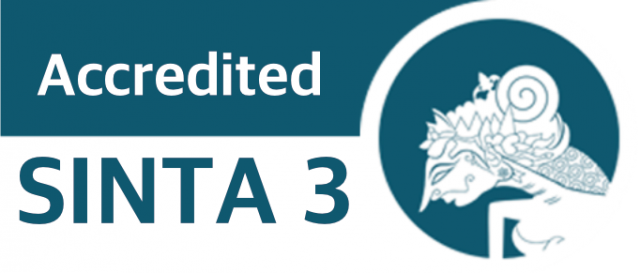œMenyama Braya: Pondasi Utama Relasi Dialog Agama-Agama di Desa Dalung, Bali
DOI:
https://doi.org/10.24114/antro.v5i2.14213Keywords:
Menyama Braya, Religion Dialogue Relations, Dalung.Abstract
The purpose of this study is to describe and analyze the life values of the Balinese "Menyama Braya", as one of the values of "local wisdom" (local wisdom), which will be a common reference as social capital, and can sustainably become the main foundation or foundation in maintain harmony in inter-religious dialogue relations in the village of Dalung, Bali. Through the concept of life "braving", the social cohesion of the Dalung community so far has been maintained. This research uses a qualitative-descriptive approach. Primary data were obtained through in-depth interviews with: village government, religious leaders, and elements of community institutions as representatives of each religion. Finally, the results of the analysis of the data obtained show that "matching braya" can be used as the main foundation of inter-religious dialogue relations in the village of Dalung. By referring to the values of local wisdom which are the heritage of the ancestors as social capital, the Dalung people are able to offer patterns of inter-religious relations that promote relational dialogue and share humanist civilization values. This study aims to examine other social values, which are considered as supporting instruments of the concept of "equalizing braya", especially in building inter-religious dialogue relations to penetrate the boundaries of differences.References
Anas, A, (2017). Mengelola Pluralisme Melalui Dialog Antar Agama. Jurnal: SMaRT, Studi Masyarakat, Religi, dan Tradisi, 3 (1), 119-124.
Baharun, H, (2018). Tradisi Ngejot: Sebuah Ekspresi Keharmonisan Dan Kerukunan Antar Umat Beragama Dengan Dakwah Bil Hal. FENOMENA: Jurnal Penelitian, 10 (1), 1-26.
Creswell, J.W., (2010). Research Design: Pendekatan Kualitatif, Kuantitatif, dan Mixed. Yogyakarta: Pustaka Pelajar.
Durkheim, E, (1947). The Elementary Form of the Religious Life. London: George Allen & Unwin.
Gubernur Bali. (2019). Peraturan Daerah Propinsi Bali, (4) 1, 21-33.
Knitter, P.F., (2003). Satu Bumi Banyak Agama: Dialog Multi-Agama dan Tanggung Jawab Global. Jakarta: BPK Gunung Mulia.
Kunawi, B, (2013), Pola Kerukunan Antar Umat Islam dan Hindu di Denpasar Bali. ISLAMICA: Jurnal Study Keislaman, 8 (1), 1-27.
Lattu, Y.M.I, (2018). Menolak Narasi Tunggal: Diskursus Agama, Pluralisme dan Demokrasi. Salatiga: Satya Wacana University.
Lattu, Y.M.I,, (2016). Performative, Interreligious Engagement: Memikirkan Sosiologi Hubungan Lintas Agama, dalam Sosiologi Agama, Pilihan Berteologi di Indonesia: 25 Tahun Pascasarjana Sosiologi Agama, Universitas Kristen Satya Wacana, Izak Lattu, eds. Salatiga: Fakultas Teologi Universitas Kristen Satya Wacana.
Pageh, I.M, (2013). Analisis Faktor Integratif Nyama Bali-Nyama Selam, Untuk Menyusun Buku Panduan Kerukunan Masyarakat Di Era Otonomi Daerah. Jurnal Ilmu Sosial dan Humaniora, 2 (2), 239-248.
Pals, D.L. (1996). Seven Theories of Religion. New York: Oxford University Press.
Parmadi, I.G.N.W. & Kusuma, P. (2016), Perancangan Karya Ilustrasi Guna Pengenalan Sistem Irigasi Subak Kepada Masyarakat Muda Di Pulau Bali. Jurnal KALATANDA, 1 (1), 81-100.
Rindawan, I.K, (2017). Peranan Awig-Awig Dalam Melestarikan Adat dan Budaya di Bali. Jurnal Kajian Pendidikan Widya Accarya FKIP Universitas Dwijendra, 1-9.
Rumapea, M.E., (2016), Kedewasaan Beragama Salah Satu Wujud Kerukunan Beragama, JUPIIS: Jurnal Pendidikan Ilmu-Ilmu Sosial, 8 (1) (2016): 15-25
Saleh, S, (2013). Kerukunan Umat Beragama di Denpasar Bali. Jurnal: AL-FIKR, 17 (1), 167-175.
Samiyono, D, (2017). Membangun Harmoni Sosial: Kajian Sosiologi Agama tentang Kearifan Lokal sebagai Modal Dasar Harmoni Sosial. Jurnal Sosiologi Walisongo, Universitas Islam Negeri Walisongo Semarang, 1 (2): 195-206.
Satria, C,, Dkk, (2017). Fotografi Decopauge Keindahan dan Fenomena Subak Bali di Gianyar dan Bangli. Jurnal PRABANGKARA, 21 (2), 51-57.
Schefer, R.T. (1989). Sociology: A Brief Introduction. New York: Mc Graw-Hill.
Schumman, O, (2003). Some Reflection on the Meaning and Aims of Interfaith Dialogue, in Dialogue and Beyond: Christians and Muslims, Together on the Way. Switzerland: The Lutheran World Moderation.
Schumman, O,, (2008). Dialog Antarumat Beragama Membuka Babak Baru dalam Hubungan Antarumat Beragama. Jakarta: BPK. Gunung Mulia.
Suharyanto, A., (2013). Peranan Pendidikan Kewarganegaraan dalam Membina Sikap Toleransi Antar Siswa, JPPUMA: Jurnal Ilmu Pemerintahan dan Sosial Politik UMA (Journal of Governance and Political UMA), 2 (1): 192-203
Timo, E.I.N, (2016). Dunia Supranatural, Spiritisme dan Injil. Salatiga: Fakultas Teologi Universitas Kristen Satya Wacana.
Titaley, A.J, (2013). Religiositas di Alenea Tiga: Pluralisme, Nasionalisme dan Transformasi Agama-Agama. Salatiga: Satya Wacana University Press.
Usman, H. & Akbar, P.S, (2008). Metodologi Penelitian Sosial. Jakarta: Bumi Aksara.
Windia, W., Dkk, (2015). Aspek Ritual pada Sistem Irigasi Subak sebagai Warisan Budaya Dunia. JURNAL KAJIAN BALI, 5 (1), 23-56.
Yewango, A.A., (2002). Agama dan Kerukunan. Jakarta: BPK. Gunung Mulia.
Zerubavel, E, (2011). Ancestors and Relatives, Genealogy, identity, & community, Oxford University Press.
Downloads
Published
How to Cite
Issue
Section
License
Copyright (c) 2020 Anthropos: Jurnal Antropologi Sosial dan Budaya (Journal of Social and Cultural Anthropology)

This work is licensed under a Creative Commons Attribution 4.0 International License.

This work is licensed under a Creative Commons Attribution 4.0 International License
Authors who publish with this journal agree to the following terms:
- Authors retain copyright and grant the journal right of first publication with the work simultaneously licensed under Creative Commons Attribution 4.0 International License that allows others to share the work with an acknowledgement of the work's authorship and initial publication in this journal.
- Authors are able to enter into separate, additional contractual arrangements for the non-exclusive distribution of the journal's published version of the work (e.g., post it to an institutional repository or publish it in a book), with an acknowledgement of its initial publication in this journal.Penulis.
- Authors are permitted and encouraged to post their work online (e.g., in institutional repositories or on their website) prior to and during the submission process, as it can lead to productive exchanges, as well as earlier and greater citation of published work (Refer to The Effect of Open Access).


